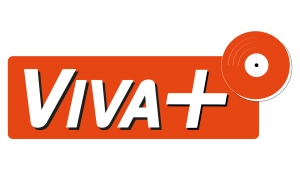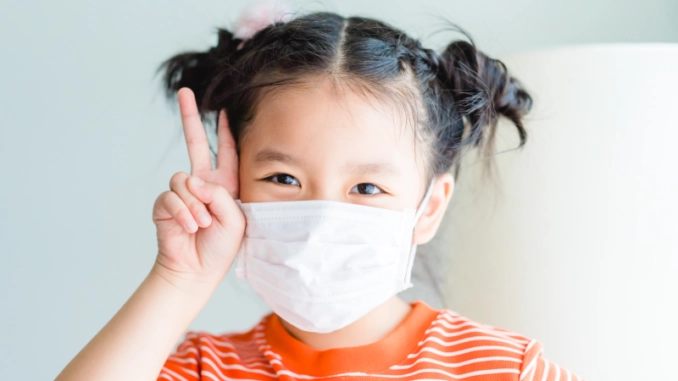
If there is one object that symbolizes the coronavirus pandemic that affects the entire planet these days, it is the mask. A small square of plastic or fabric that has become essential to protect ourselves from the spread of Covid-19. This accessory, which acts as a barrier to microbes and other harmful substances, is not new. Thanks to the observation of the first “scientists” and doctors of the past, the mask was created, it must be said, to protect us. Here is the little story of the mask.
The mask in the Performing Arts
Since ancient times, the mask has always played an important role in the evolution of our civilization. At its origins, it had a funeral function. In the necropolises of Egypt and in the tombs of Mycenae, the mask is summed up to a simple gold leaf placed on the face of the dead to mold its features. Thanks to this trick, it was possible to keep its features intact.
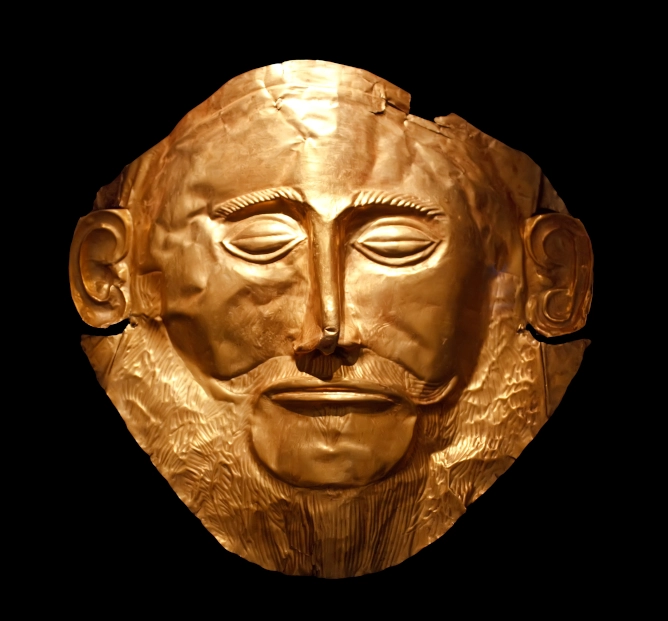
Later, the mask will be designed in lighter materials and will appear in the theater. The mask is then made of bark, then leather, and finally thick canvas coated with wax. Finally, Venice invents the velvet or black satin mask. During the Renaissance, it became fashionable all over Europe, especially thanks to the Italian comedy (Comedia dell Arte).
Today, our carnival masks are a distant memory. Parade, theater, dance, or Halloween masks, who has never worn a mask?
But the mask will also be assigned throughout history a very different function, the one of protection.

Necropolis
A spacious place where the dead were buried in large graves.
Mycenae
An ancient city located in Greece, dating from 1500 BC. AD


Mask as a protective object
The first protective masks appeared under the Roman Empire more than 2,000 years ago. Did you know that they are made from animal bladder? They were also used in mines to protect workers from toxic vapors. The same device was also used in workshops where the minium was reduced and refined. A very toxic ore they used to make anti-rust paint.

Minium
Rare ore composed of lead oxide and used in the first artificial paintings during the Roman Empire.
In the 16th century, Leonardo da Vinci modified the mask and proposed the use of a soaked in water cloth to be placed on the mouth of navigators to protect them from possible chemical attacks during naval battles.

Epidemic
The rapid spread of a disease in a region
Plague
An infectious disease caused by bacteria carried by the rat. It caused many deaths in Europe in the Middle Ages.

Between the 14th and 18th centuries, the period was marked by several epidemics of plague which shook Europe. For doctors of the time, the contagion spreads through the mouth and nose. Charles de Lorme, the first physician of Louis XIII, then imagines in 1619 a mask in boiled cardboard endowed with a beak punctured with two holes allowing breathing. And to perfect its effectiveness, it can contain a wide variety of products with disinfectant properties, such as dried flowers, aromatic herbs, spices, or camphor.
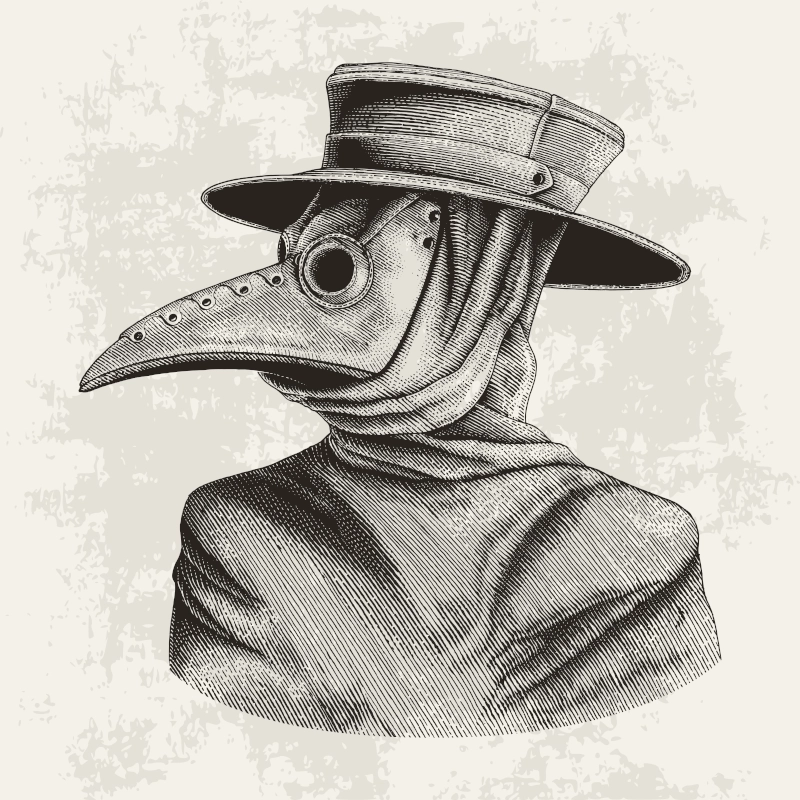

The 18th century is what is called the Industrial Revolution. At that time, many factories and companies were born. Thanks to the Italian Bernardino Ramazzini, the forerunner of occupational medicine and true founder of professional hygiene, an increasing interest rises in all trades exposed to dangerous substances. Among the various devices implemented, it is recommended to those working in unsanitary swamps to cover their face with a fabric or gauze.
The application to the nose and mouth of a wet sponge or a thin, tight cloth in the shape of a hollow cone is also recommended for color grinders, plasterers, plumassiers, wool carders or hat makers. Adding vinegar, or other products like limewater is enough to protect glue manufacturers, drainers, gravediggers, and even hospital workers.
At the end of the 19th century, the German doctor Carl Flügge, suspecting the spread of the disease between doctors and patients through saliva, banged the drum for his colleagues to wear a mask during surgical operations. It seems that it was the surgeon Paul Berger who, during an intervention at the Tenon Hospital in Paris in October 1897, was the first to put on such a mask. An accessory that has now become compulsory in operating theaters.

Hygiene
The set of good gestures of cleanliness to promote health.
Insanitary
Not sanitary
Gauze
A type of very thin silk or cloth
Limewater
Chemicals used in industry to treat acidic waters.
The gas masks of the Great War 14-18
During the First World War, a new weapon was introduced into the conflict: combat gases. They included a wide range of toxic compounds ranging from irritating but relatively mild tear gas to deadly asphyxiating gases. The goal: to kill massively. It was on April 22, 1915 that the first gaseous layers sent by the Germans submerged British troops on a 10 km front and reached the Belgian and Canadian forces positioned at Ypres. This chemical warfare was a major component of the First World War. It is estimated that about 4% of the deaths were caused by the gases.
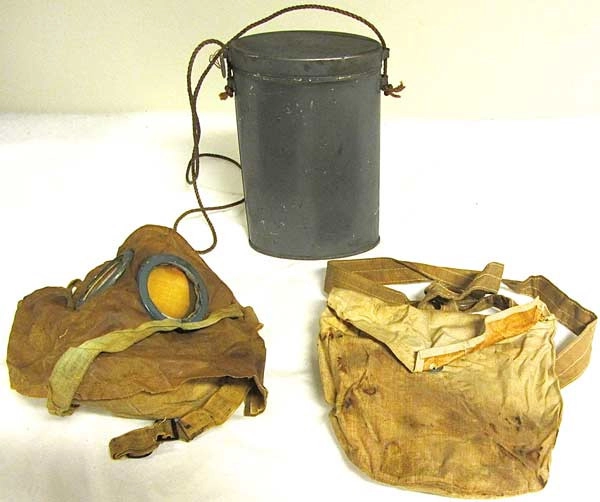
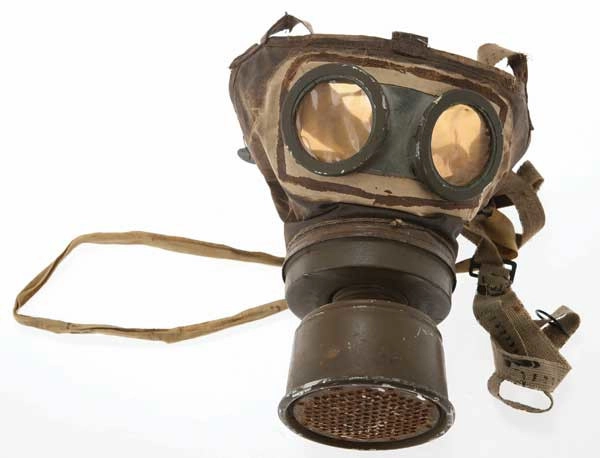
Gas mask box M2, French paint, belgian army, 1916 with gaz mask
Antigaz mask A.R.S. model 1917, belgian army
Appeared in late April 1915, a week after the first German gas attack, protective masks appeared in the form of gauze pads soaked in a chemical to counter toxic gases. Easy to manufacture, they are however not very effective. They were quickly replaced by hood masks, and finally, in 1918 by A.R.S. fitted with a carbon filter (Special Breathing Apparatus). In 1940, all the armies and populations of Europe were abundantly equipped with it.
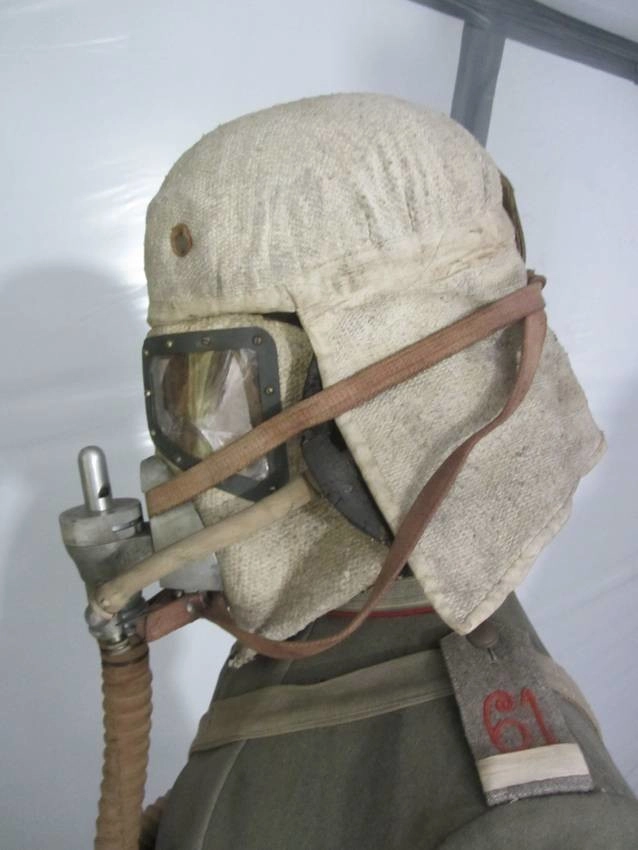
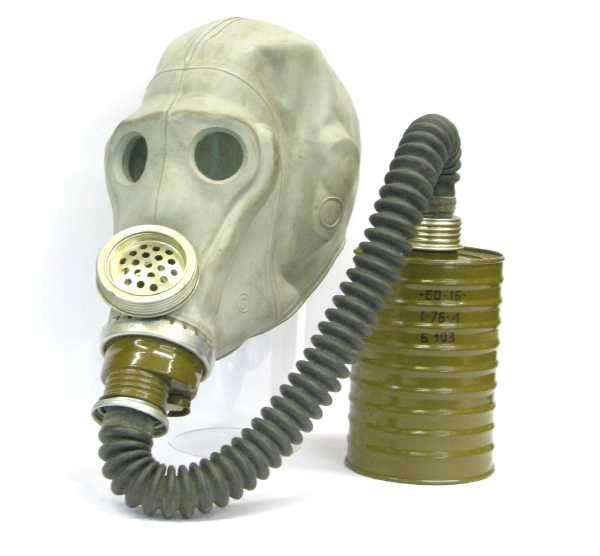
White asbestos respiratory protection L.A.S.A. Atem Schutz Apparat (ABESTOS), Germany, circa 1910
Antigaz ask set mod. Sch MS, Bundeswehr, german army, circa 1980, inv nr200800624
Surgical masks
A surgical mask (also called anti-spray, or hygiene or three-pleats face mask) is a single-use protective mask. It is designed to limit the spread of germs (bacteria, viruses) from the mouth, nose, and respiratory tract of the wearer.
The mask retains the respiratory droplets like the postillions in a non-woven filter screen and comprising an impermeable layer. By wearing these surgical masks, the risk of microbial contamination to the caregivers’ relatives is greatly reduced.
This type of mask is worn by health professionals during surgery to protect the patient, covered with a sterile drape. In this way, the patient is protected from possible infection.


Compress
Piece of cloth, gauze, used to make a bandage.
Operative field
The location of the body where surgery is performed.
Sterile
Free of germ (bacteria, virus …)
Although it is not designed for this, it is also often worn to protect oneself both against air pollution and possible infections, as during the pandemic of Covid-19. This widespread use is currently causing a global shortage of these masks: it becomes a central problem of the coronavirus pandemic.
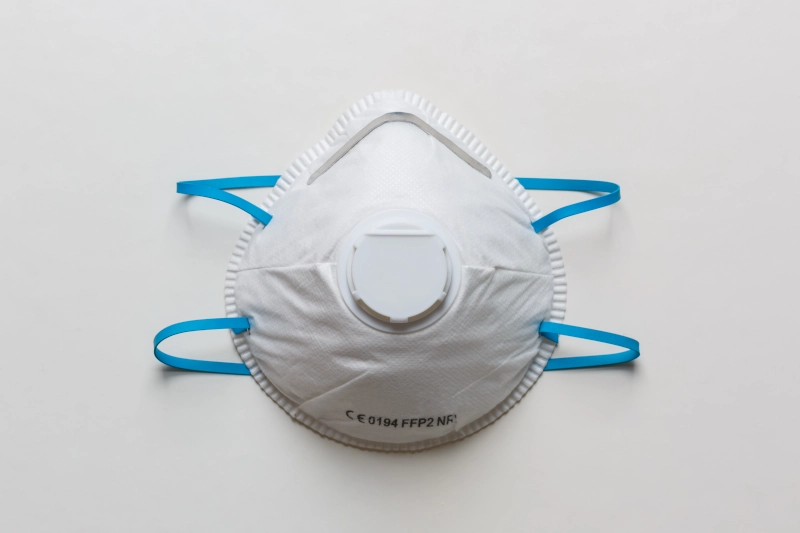
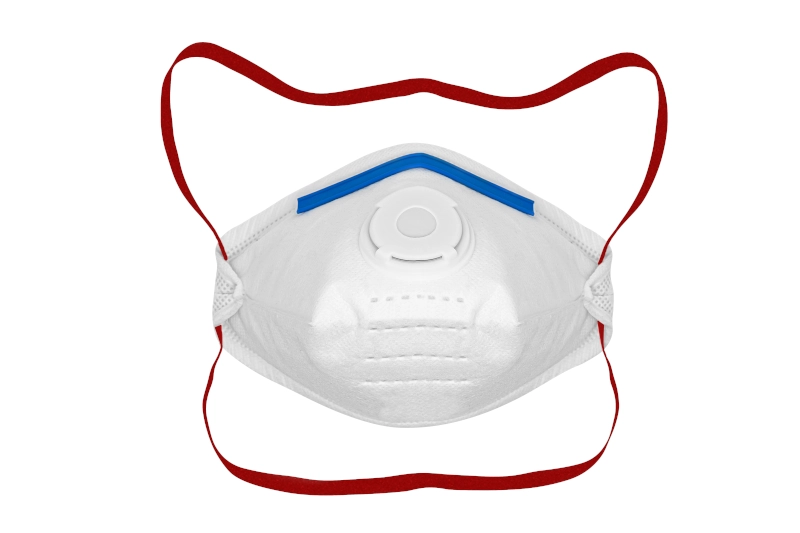
Mask FFP2
Mask FFP3
The surgical mask is not a filtering respirator and cannot be certified as such. The other comparable masks are the so-called FFP protective masks. You will find there medical masks (FFP2 and FFP3) and non-medical (anti-dust: FFP1), and fabric barrier masks (for the mainsteam).
Want to know more ?
Listen to us on your favorite radio!

